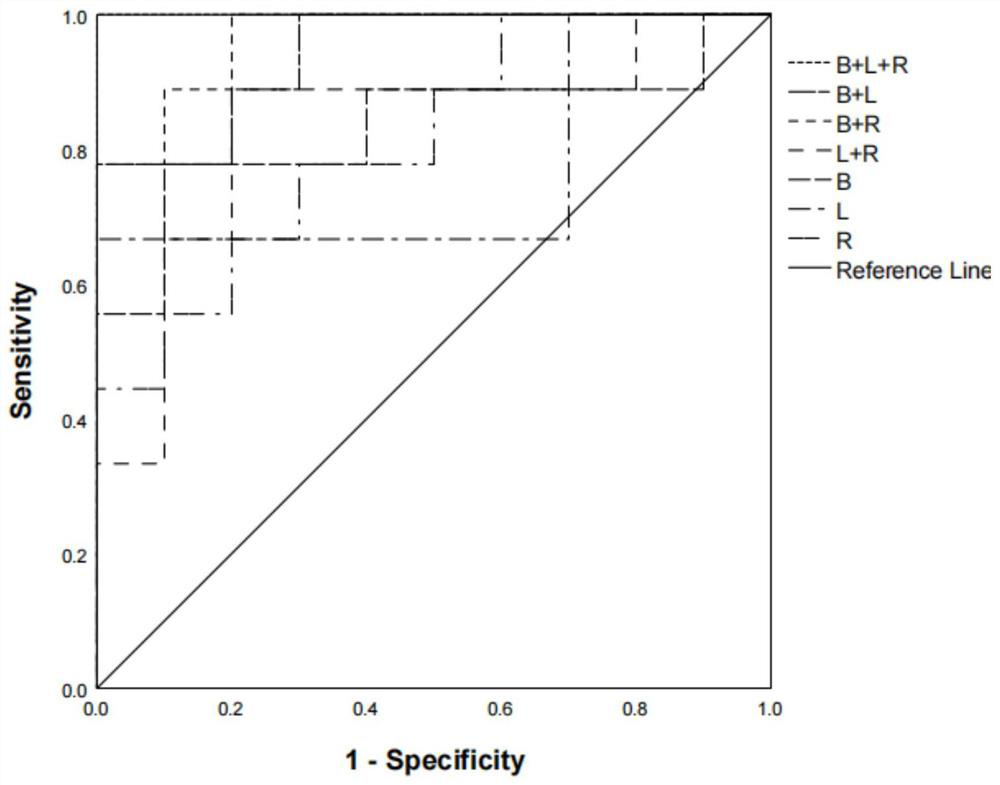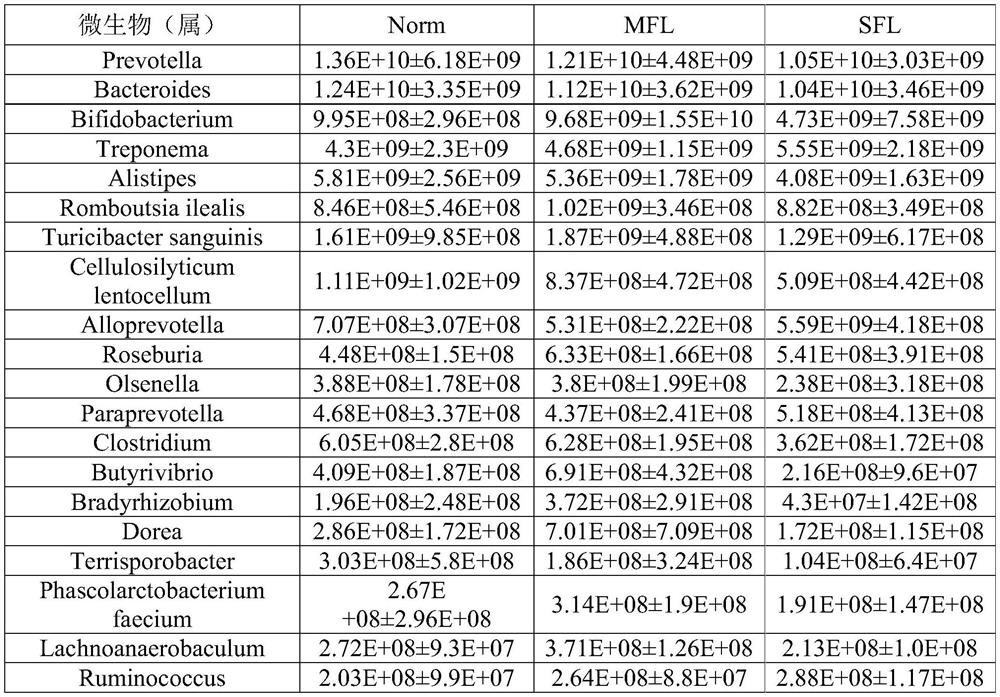Method for early warning or noninvasive diagnosis of fatty liver dairy cow by using genus-level fecal microorganisms
A technology for microorganisms and fatty liver disease, applied in the fields of analytical chemistry and clinical medicine, can solve problems such as poor prognosis complicated by infectious diseases, troublesome urine collection, unfavorable animal welfare, etc., and achieve low cost, simple operation, and health-promoting effects
- Summary
- Abstract
- Description
- Claims
- Application Information
AI Technical Summary
Problems solved by technology
Method used
Image
Examples
Embodiment 1
[0040] Example 1: Verification of the identification ability of microorganisms
[0041] The subjects of this experiment were Chinese Holstein cows within 1 to 2 weeks after calving. The experimental site is a large-scale dairy farm in Shandong, and the feeding management of the cows collected during the experiment is consistent. Using serological testing for primary screening and specific dairy cow liver biopsy for diagnosis, we finally obtained severe fatty liver cows (denoted as SFL), moderate fatty liver cows (denoted as MFL) and normal liver cows (denoted as Norm). The diagnosis of liver biopsy was based on the percentage of fat depositing cells per unit area after oil red O staining, among which the severe fatty liver group, the moderate fatty liver group and the normal liver group were n=12, n=9, and n=10, respectively. head. For three different groups of cows, fasting fecal samples were collected before morning feeding, and cryopreserved in liquid nitrogen for subsequ...
Embodiment 2
[0052] Example 2: Changes in the abundance of microorganisms in the three Norm-MFL-SFL groups
[0053] Three groups of microorganisms, Bifidobacterium (Bifidobacterium), Roseburia (Rosella), and Lachnoanaerobaculum (Lachnoanaerobaculum) were screened by ROC, and the abundance ratio of Bifidobacterium (Bifidobacterium) from Norm was found 2.20% to 18.51% of MFL to 11.42% of SFL can be seen in the diseased group with a large increase. The abundance changes of Roseburia (Roseella) and Lachnoanaerobaculum (Villance anaerobes) in Norm-MFL-SFL also increased in the diseased group, but the abundance ratio was smaller (Table 4).
[0054] Table 4. Changes in relative proportions of fecal microbial genus abundance in dairy cows with different metabolic states (mean value) 1
[0055]
[0056] 1 Note: The proportion of these microorganisms under the premise that the top 20 microorganisms in the fecal microbial abundance of dairy cows in the normal state (Norm) account for 100%.
Embodiment 3
[0057] Example 3: Combination of microbial markers improves validation capabilities
[0058] In order to improve the verification ability of microorganisms between groups, we performed a joint analysis of the three microorganisms at the genus level (as shown in Tables 5 and 6). Using the binary logistic regression in SPSS, the three microbial variables were arranged and combined in different ways, the predicted value after the combination was fitted, and then the ROC analysis was performed. Finally, the combination of the three microorganisms Lachnoanaerobaculum, Roseburia and Bifidobacterium at the genus level was obtained. The grades are the best. In the MFLvsNorm group, the AUC of the combined analysis of the three groups of microorganisms reached 1, and in the SFLvsNorm group, the AUC of the combined analysis of the two groups of microorganisms of Lachnoanaerobaculum and Bifidobacterium reached 0.867.
[0059] Table 5. Accuracy analysis of different microorganisms at the ...
PUM
 Login to View More
Login to View More Abstract
Description
Claims
Application Information
 Login to View More
Login to View More - R&D
- Intellectual Property
- Life Sciences
- Materials
- Tech Scout
- Unparalleled Data Quality
- Higher Quality Content
- 60% Fewer Hallucinations
Browse by: Latest US Patents, China's latest patents, Technical Efficacy Thesaurus, Application Domain, Technology Topic, Popular Technical Reports.
© 2025 PatSnap. All rights reserved.Legal|Privacy policy|Modern Slavery Act Transparency Statement|Sitemap|About US| Contact US: help@patsnap.com



